|
|
|
Editor's note
|
|
With the death of former prime minster Bob Hawke yesterday, the election campaign has drifted away, as people instead pay tribute to the much-loved leader. But before then we had five weeks of heated, at times unedifying, campaigning, as the parties and candidates staked their claims.
Tomorrow is, of course, the day of reckoning, when those of us who haven’t pre-polled cast our ballot and, finally, the votes will be counted. To help you make the most informed decision possible, we have gathered some of the best pieces from our academic authors over the course of the campaign. This is led by two excellent essays by Michelle Grattan and Paul Strangio on the two potential prime ministers, Scott Morrison and Bill Shorten respectively. We also have an infographic laying out the key policy claims of the two major parties, and Grattan’s final analysis ahead of the polls.
We will be covering the results on the night and, in the days after, we will bring you some of the sharpest analysis from our best academic writers (democracy sausage not included).
|
Amanda Dunn
Section Editor: Politics + Society
|

|
|
Federal Election 2019
|
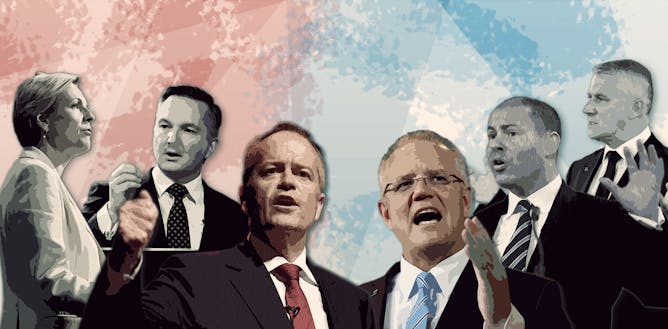
The Conversation / AAP Images
Emil Jeyaratnam, The Conversation; Andrew Donegan, The Conversation
What are the key policy issues on which the 2019 federal election will be fought?
|
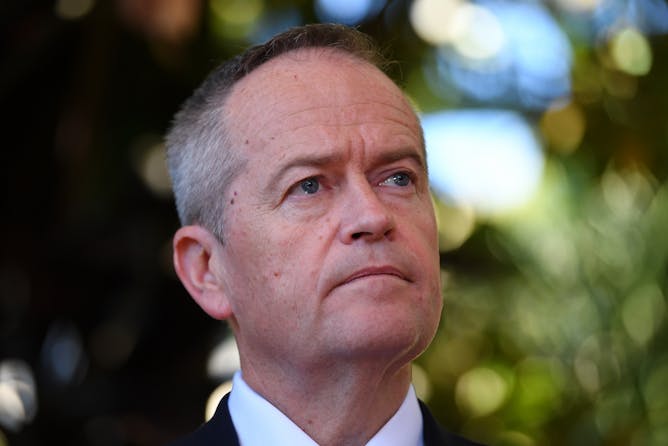
Eyes on the prize: if the polls are right, Bill Shorten will become the next prime minister. But what kind of prime minister would he be?
AAP/Lukas Coch
Paul Strangio, Monash University
The Labor leader's personal popularity is stubbornly low, but this has allowed him to build himself as a team player, and position him well to become Australia's next prime minister.
|
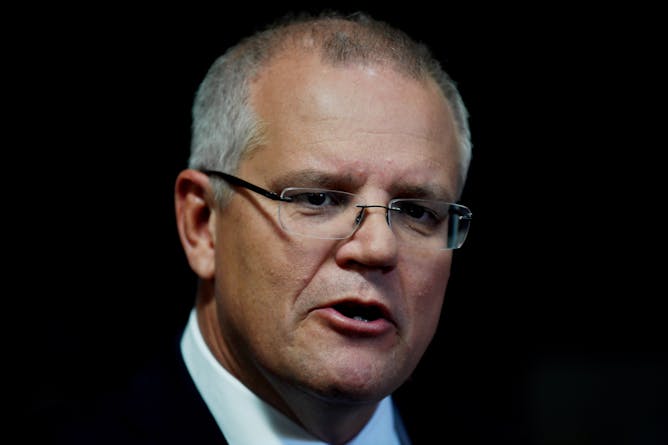
It’s possible to overthink Morrison. A long-time associate and friend says “what you see is what you get”.
AAP/Dean Lewins
Michelle Grattan, University of Canberra
If someone asked the “real Scott Morrison to please stand up”, two men might rise to their feet. The uncompromising, don't-give-an-inch hard Scott, and a more conciliatory, flexible character.
|
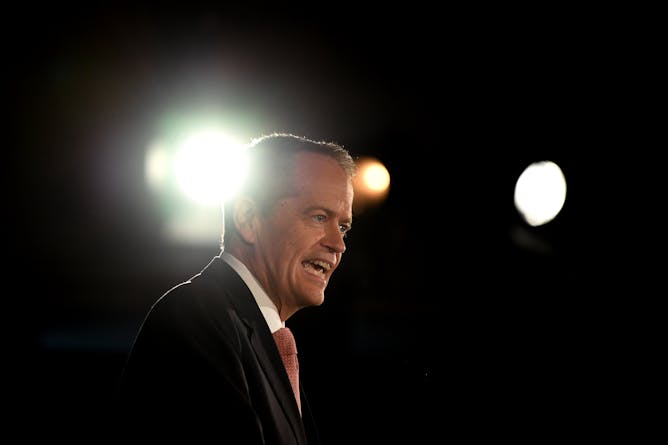
While Shorten plays well to a crowd of the faithful, he is no Whitlam, who captured the public’s imagination with genuine charisma.
Lukas Coch/AAP
Michelle Grattan, University of Canberra
Like Whitlam, Shorten is selling a huge bag of promises (including in those familiar Whitlam areas of health, education, environment and infrastructure - climate change is a central addition).
|
FactChecks
|

Peter Sivey, RMIT University
Yes, 86% of GP visits were bulk-billed in 2017-18, up from 82% when Labor was in power. But they also rose under Labor, while the percentage for "patients" seems to be lower than the percentage for "visits".
| |
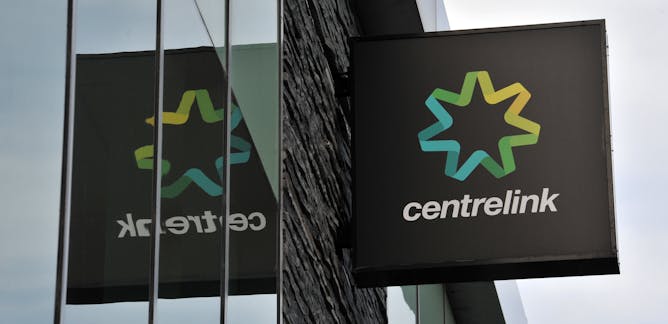
Ben Phillips, Australian National University; Cukkoo Joseph, Australian National University
Yes, most jobseekers who receive Newstart payments are also eligible for other benefits. But in many cases this is just a few dollars a fortnight to help with expenses such as electricity bills.
|
|
|
In case you missed it
|
-
Caroline Fisher, University of Canberra
Any good political spin doctor employs a range of overt and covert tactics to get their message across. Here are some of the most common ones.
-
John Wanna, Australian National University
He's spending big and may well win a spot in the Senate. But the big question is what the billionaire businessman intends to do if he returns to the Australian parliament.
-
Chris Aulich, University of Canberra; Ian Cook, Murdoch University; Lachlan Johnson, University of Tasmania; Maxine Newlands, James Cook University; Michael Lester, University of Tasmania; Nick Economou, Monash University; Rob Manwaring, Flinders University
Recent polling suggests the race is tightening. Then again, opinion polling suggested the recent Victorian state election would also be a close affair and it turned out to be a Labor landslide.
-
Feo Snagovsky, Australian National University; Patrick Dumont, Australian National University
Despite criticism of running a radical left agenda, new research shows most independents' views are somewhere between the major parties.
|
|
Policy comparisons
|

Labor has promised A$8 billion in new health expenditure, while the Coalition has focused on the difference new pharmaceuticals can make to individual Australians.
Shutterstock
Stephen Duckett, Grattan Institute
Labor and the Coalition's health policies and campaign strategy couldn't be more different this election.
|

How do the major parties’ education commitments stack up?
from shutterstock.com
Kate Noble, Mitchell Institute
If you're confused about all the millions and billions thrown around for education by the two major parties, here's the low-down on what the policies actually mean.
|

On industrial relations policy, the Coalition and Labor offer starkly different choices this election.
AAP/Nic Ellis
Sarah Kaine, University of Technology Sydney; Chris F. Wright, University of Sydney
At this election there is a stark choice between the two major parties on industrial relations: the "small target" approach of the Coalition and the ALP's more ambitious and detailed plan.
|
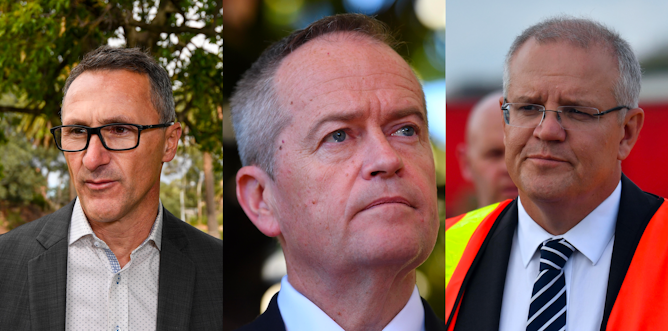
If climate action from every country was as inadequate as Australia’s, the world would be on track for 4°C warming.
AAP
Kate Dooley, University of Melbourne
Here's how the coalition, Labor and the Greens stack up against the Paris targets.
|

The numbers of buyers able to celebrate moving into their first home are still well down on pre-GFC levels – and low-income renters are faring even worse.
fizkes/Shutterstock
Hal Pawson, UNSW; Bill Randolph, UNSW
Housing policy is a stark point of difference at this election. While the government took promising steps to set up social housing finance, it has yet to give any sign it will finish what it started.
|
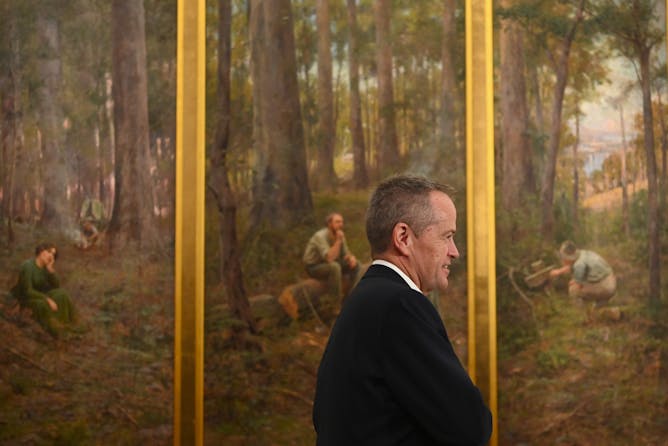
Bill Shorten walks past the painting The Pioneer by Frederick McCubbin at the NGV Australia in Melbourne on May 11.
Lukas Coch/AAP
Jo Caust, University of Melbourne
Labor's arts election policy includes more funding for the Australia Council and the ABC. But while this is welcome, arts and culture deserve far greater attention.
|
| |
Featured jobs
|

|
La Trobe University — Bendigo, Victoria
|

|
Curtin University — Perth, Western Australia
|

|
University of Western Australia — Perth, Western Australia
|

|
University of Melbourne — Parkville, Victoria
|
|
|
|
| |
| |
| |
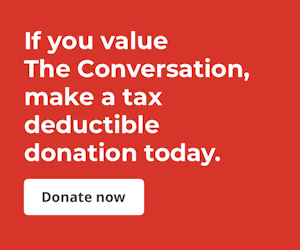
|
| |
| |
| |
Featured events
|

|
Monash University Law Chambers, 555 Lonsdale Street, Melbourne, Victoria, 3000, Australia — Monash University
|

|
The University of Sydney, Sydney, New South Wales, 2006, Australia — University of Sydney
|
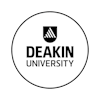
|
Deakin Downtown, Level 12, Tower 2, Collins Square, 727 Collins Street, Docklands, Melbourne, Victoria, 3008, Australia — Deakin University
|

|
The University of Sydney, Sydney, New South Wales, 2006, Australia — University of Sydney
|
|
|
|
| |
| |
| |
| |
| |
|
|
|
|
|
|
|